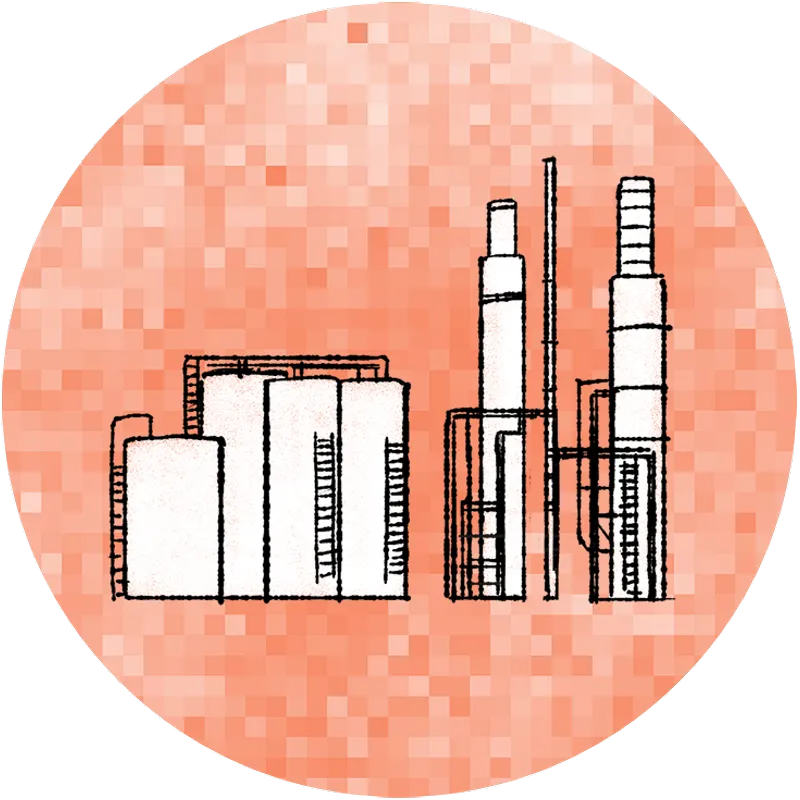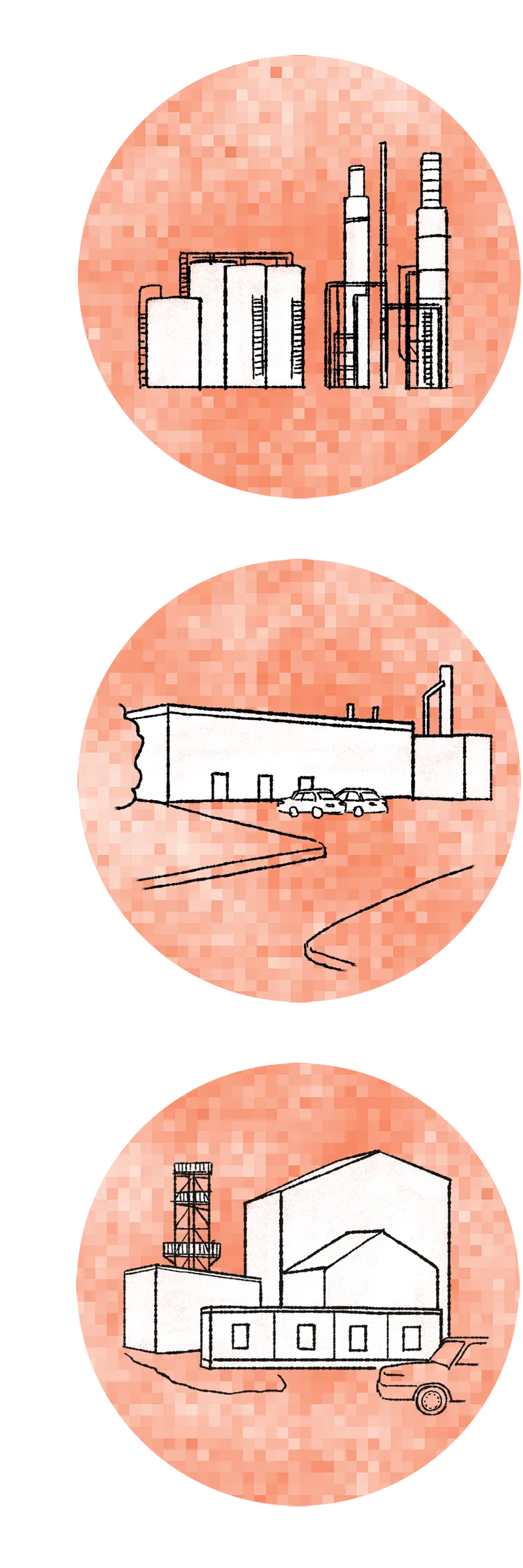You may be one of millions of people across the country who has lived in an area with an increased estimated cancer risk because of the chemicals industrial facilities release into the air.
A number of residents have asked for more information about what this means, what the laws are, and what — if anything — they can do to protect themselves and their communities when the regulatory system does not. To answer their questions, we spoke to health experts and academics who study toxic air pollution, government officials and other residents who have lived in hot spots for decades. We also dug into reports and data.
Can air pollution cause cancer?
Yes. Different types of air pollution have been linked to a variety of cancers. Regulators and scientists use the term “air toxics” to describe chemicals that can cause cancer or other serious health impacts such as asthma and heart disease.
Even though air pollution can cause cancer, it is rarely possible to identify a single cause for one person’s cancer diagnosis. There are many factors that impact someone’s chances of developing cancer, including:
- Exposure to air toxics from living near or working in industrial facilities
- Exposure to pesticides, other chemicals or diesel and car exhaust
- Genetics
- Whether someone smokes tobacco, drinks alcohol
- Diet and exercise
These risk factors can sometimes compound one another, increasing the chance that cancer may develop.
Just like cars have brake pedals and emergency brakes to avoid accidents, the human body has defense mechanisms against the growth of damaged or abnormal cells that can cause cancer, said Edward Trapido, the chair of cancer epidemiology at Louisiana State University’s School of Public Health. If a car has a history of brake line leaks and the driver is riding through a heavy rainstorm, it can be more likely that an accident will occur. Similarly, if you have a family history of certain cancers and are exposed to additional toxic air pollution that can mutate DNA, damaged or abnormal cells may be more likely to slip by your body’s defense systems, leaving you at a higher risk of developing cancer.
What is an industrial facility?
Industrial facilities are spaces companies own and operate to create products. Take BASF and Dow, two of the largest chemical companies worldwide. The companies run dozens of industrial facilities across the United States, where they make chemicals that go into everyday household items like laundry detergent and dish soap. Other industrial facilities include oil refineries and companies that sterilize medical equipment. ProPublica’s reporting is focused on the largest polluters with the greatest potential to affect local cancer risk.
How can I know where industrial air pollution is?
Because many industrial facilities have to make this information public. They are required to report the types and amount of toxic air pollutants they release to the federal government’s Environmental Protection Agency. The agency has a screening tool that models how the chemicals industrial facilities emit spread across communities nationwide. You can see how far this toxic air pollution spreads on ProPublica’s interactive map.
It is important to note that this data collection process is imperfect and prone to inaccuracies. (More on that here.) One of the best ways to know what a facility is releasing is by testing the air coming out of the facilities’ smokestacks. But this rarely happens. (More on that in a later story.)
How can chemicals from industrial facilities affect health?
People living in areas with industrial air pollution may have a higher additional risk of developing cancer over their lifetime.
Toxic air pollution can enter your body when you breathe it in. If the toxic air pollutant is a known carcinogen, that means it can increase your risk of developing certain cancers by disrupting the way cells are produced in your body and mutating their DNA. These cancerous cells can then crowd out healthy cells, causing a cascade of effects. There can be other health consequences from this toxic air, ranging from headaches to heart disease. (More on the types of cancers and health effects below.)
These pollutants can enter your body through other pathways, too. Toxic pollution can seep into nearby soil or water systems. Your skin can be exposed by touching surfaces with toxics on them, though this is likely to result in smaller doses of exposure. You may also be exposed by eating food grown in toxic soil or by drinking contaminated water.
About evaluating your own cancer risk
How much extra cancer risk is my neighborhood facing from industrial facilities?
Scientists and regulators assess additional cancer risk using a figure they call Incremental Lifetime Cancer Risk. This lets them compare how many more people in a given community are likely to get cancer assuming they are exposed to a chemical 24 hours a day for 70 years (a presumed human lifetime).
For example, let’s say you are in an area where elevated cancer risk from industrial air pollution is estimated to be 1 in 10,000. That means of every 10,000 people living in this area over a presumed lifetime of 70 years, it is estimated that at least one additional person will get cancer.
You can find the estimated elevated cancer risk in your area by visiting ProPublica’s interactive map. ProPublica analyzed and mapped five years of modeled data to understand how toxic air pollution may increase communities’ estimated cancer risk. The data models added cancer risk between 2014 and 2018. As you read the map, remember that the elevated risk is an estimate and a starting point to identify areas of potential concern. There are also other associated health risks not captured by the data.
There is cancer risk everywhere. What level of elevated cancer risk is considered unacceptable?
This depends on who you ask, but the EPA generally considers any estimated additional cancer risk that reaches 1 in 10,000 not sufficiently protective of public health, according to the agency’s Office of Inspector General. The agency can — yet will not always — intervene when the estimated elevated cancer risk reaches this level.
The agency also maintains that it strives to “protect the greatest number of people possible” from an estimated additional cancer risk level higher than 1 in a million but generally views this amount of risk as acceptable.
According to our analysis, about 250,000 people live in areas where the estimated increased lifetime cancer risk is above 1 in 10,000 because of toxic air pollution. Tens of millions of people live in areas where this estimated additional risk is higher than 1 in a million.
How long do I have to live somewhere for my estimated cancer risk to be elevated?
It depends on the toxic air pollutant, and how much of it is in the air you are breathing. Scientists assume people live continuously in an area for 70 years and are exposed to this toxic air pollution for 24 hours a day when evaluating elevated cancer risk. But research has found that exposure to chemicals for even shorter periods of time can lead to cancer cases.
The time between exposure and diagnosis, known as the latency period, is different for each chemical and depends on how much of the chemical you were exposed to.
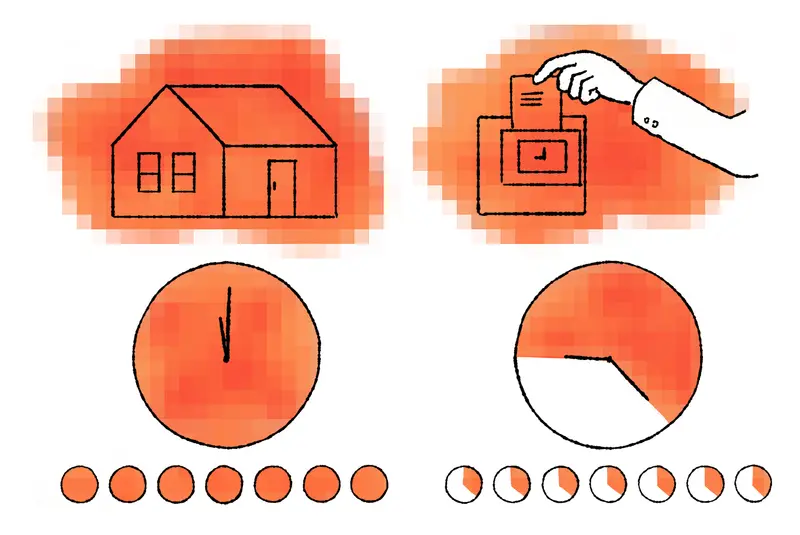
What does it mean if I work in an area with elevated industrial cancer risk?
You may be exposed to toxic air pollution, especially if you work in an industrial facility.
In that case, you have a legal right to request more information on your exposure levels from your employer. (If you’re interested in getting this information, let ProPublica know by filling out the form at the bottom of this article.) Workplace regulations on chemical safety are different from air pollution laws for the general public. Workers within these facilities are likely exposed to higher concentrations of toxic chemicals than residents who live nearby.
What kinds of cancer are associated with the toxic air pollution in my area?
It depends which toxic air pollutants you are exposed to. To find out more about your own situation:
- You can reach out to your local emergency planning committee. These groups are responsible for providing you and your neighbors with information about the chemicals nearby industrial facilities are using. You can find your local committee by reaching out to your state emergency response commission members. Find their contact information here.
You can also ask the part of the EPA that oversees the overall risk assessment by calling (202) 566-1676 or emailing [email protected]. - You can check out the risk associated with each chemical on the EPA’s website here. After you search for the particular chemical, you can click on the IRIS, or Integrated Risk Information Summary, for more detailed information on studies examining its specific cancer risk. There may also be “Supporting Documents” for the toxic air pollutants that get into more detail about certain cancers. These documents are technical and can be hard to understand, so you may want to reach out to a public information officer at your local health or environment department for more information. Your health care provider may also be a good person to ask about this.
Are children at greater risk?
Toxic air pollution that is carcinogenic, meaning it can mutate DNA, may put children at a greater risk than adults.
How can I learn more about the facilities putting me or people I know at elevated risk?
Here are some other resources with more information on industrial facilities, the toxic air pollution they release and estimated health risks:
- The National Air Toxics Assessment, an EPA screening tool that suggests what the long-term cancer and health risks might be if toxic air emissions were to remain the same over a lifetime.
- The Toxic Release Inventory program, an EPA database where you can find which chemicals a facility is using and how much of the chemicals the facility is releasing into the air each year.
- The University of Massachusetts Amherst’s Political Economy Research Institute, which has searchable reports and rankings for the top air polluters in the country.
- The National Emissions Inventory, a federal collection of data on local air pollution emissions that is published every three years.
- The Enforcement and Compliance History site, an EPA tool where you can look up industrial facilities and their past compliance with environmental regulations and find any enforcement actions agencies have taken against them.
- EJSCREEN, an EPA mapping tool that combines information on cancer and health risks from pollution with demographic information.
You may also want to consult the federal government’s plain English guide to the Clean Air Act as you learn more.
About environmental laws and regulations
What is the government supposed to be doing to protect me from toxic air pollution?
The EPA publishes and reviews standards for the pollution-reducing technologies industrial facilities use to reduce the amount of toxic pollution released into the air. The agency then relies on air modeling to screen for areas with estimated increased cancer risk. If the EPA finds an area where the estimated additional lifetime cancer risk around industrial facilities is higher than 1 in 10,000, officials can — but are not required to — investigate whether the risk is actually that high, why it might be that high and what steps to take to lower the risk levels.
Industrial facilities also need permits to operate, which is where state officials come in. These officials are largely responsible for approving and denying these permits, which are called Title V permits. When deciding whether a permit should be approved, states are not always required to consider how proposed new sources of pollution may add onto the risk nearby communities already face from other types of pollution. State officials usually approve these permits with little pushback, according to environmental law experts.
Residents can petition the EPA to set stricter standards for facilities or file a petition with the state if the modeled elevated cancer risk is more than 1 in 10,000. Victor B. Flatt, an environmental law professor at the University of Houston, said this is a years-long process that has rarely led to significant changes for residents living near facilities.
Even with these processes, ProPublica found that people are being exposed to estimated cancer levels the EPA considers not acceptable (more on that here). When ProPublica spoke with EPA officials about its findings, Matthew Tejada, director of the agency’s Office of Environmental Justice, acknowledged that the system for regulating and reducing toxic air pollution is inadequate. “We haven’t regulated for these things,” Tejada said.
Tejada said the agency is working on solutions, but explained that some will take time, maybe even decades.
Pollution disproportionately affects people of color. Are there any laws that protect me?
A number of communities have used the National Environmental Policy Act to push back against companies looking to build or expand industrial facilities. Under the law and an ensuing executive order, federal agencies have to consider the overall environmental consequences before approving a project, as well as the potential for disproportionate impact on communities of color. People who may be impacted by the potential pollution are guaranteed the opportunity to provide comments and feedback. To learn more about the law, check out this guide.
The EPA’s Office of Environmental Justice also has a hotline people can call or email with concerns or questions.
What else have communities near industrial facilities done to protect themselves?
- Pushed for better information. Lydia Gerard, an environmental activist who lives in Reserve, Louisiana, where much of the industrial cancer risk is higher than what the government considers safe, said: “If you have to get in touch with local agencies to get information, find out where you need to go to get it. If the levels are high, make sure you stay on top of the EPA and your local agencies to make sure they are doing what they are supposed to do.”
- Tested the air.
- Campaigned for air monitors to be installed and for the associated data to be released publicly.
- Secured funding to conduct independent air monitoring. Environmental activist Penny Dryden, for example, has a grant from a local health care system to monitor fine soot pollution in communities near chemical facilities surrounding New Castle and Wilmington, Delaware — her hometown. While she would like to monitor air toxics next, the technology is expensive and requires significant scientific expertise.
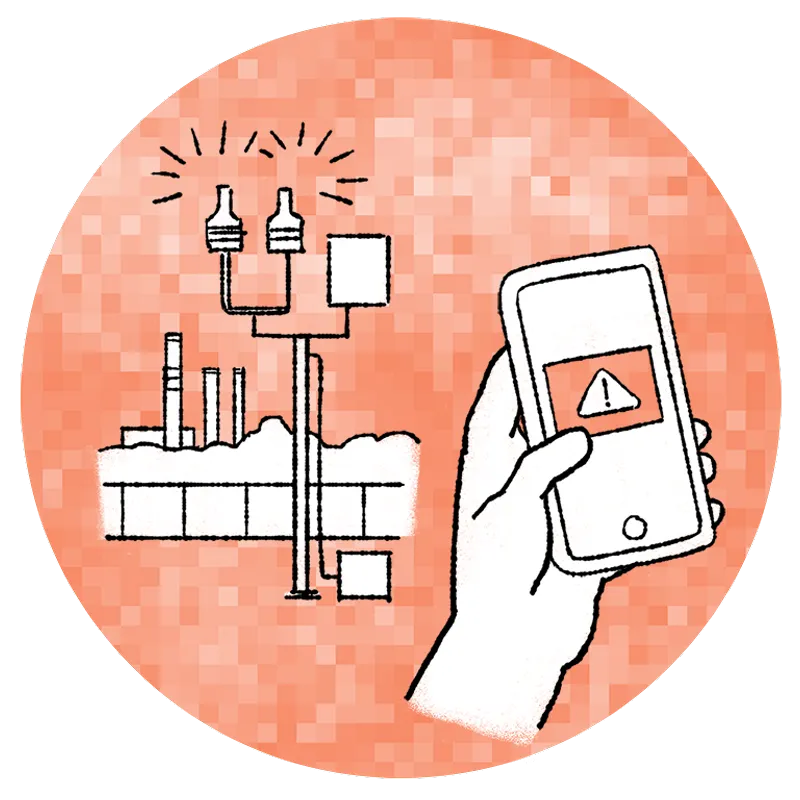
- Asked to be notified. Residents have worked with industrial facilities and local authorities to get notified by facilities, local emergency response groups or other local officials when facilities release more toxic air pollution than usual.
Some residents told us that they decide not to go to the grocery store or the pharmacy when a monitor shows high levels of pollutants. You can check your local air quality at airnow.gov, but this does not include information specifically on air toxics levels from industrial facilities.
- Set up carbon filters. Wilma Subra is an environmental scientist who has been helping communities across the South understand and reduce their exposure to toxic air pollution since the 1980s. She advises that people use carbon filter units to reduce the concentration of compounds like benzene inside their homes. However, these filters can be too expensive for many families and need to be changed on a regular basis. The California Air Resources Board published a list of portable air filters. The equipment ranges in cost from about $10 to $30 per month.
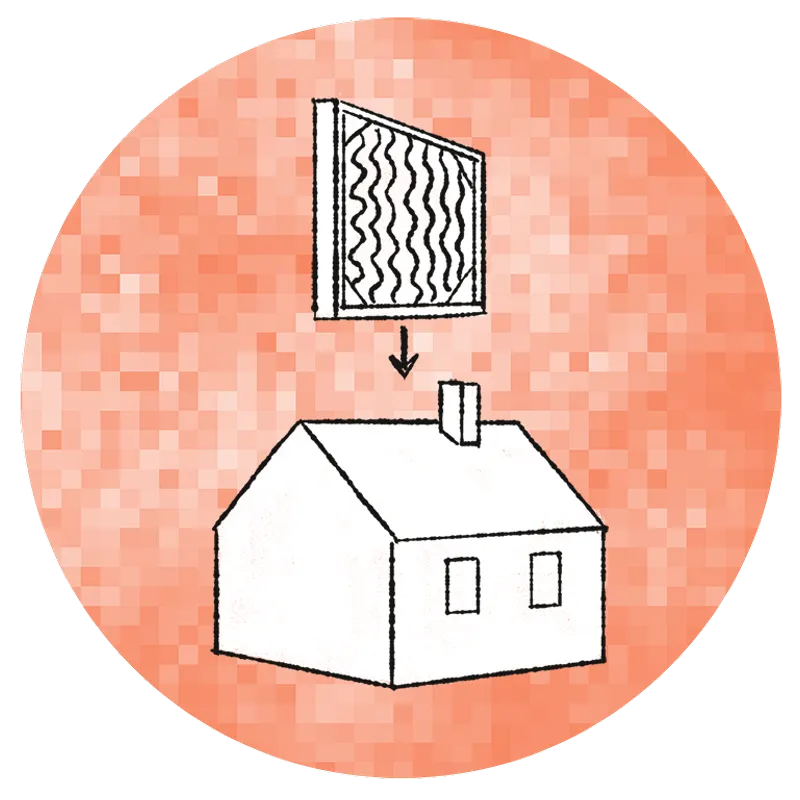
- Consulted with lawyers. To know your legal rights, it can be helpful to get in touch with a lawyer. Under the Clean Air Act, residents, environmental groups and industrial facilities have sued the EPA for failing to carry out its legally mandated actions. Groups have also sued to challenge the air-quality-related standards the agency develops.
Over the EPA’s decades-long history, lawsuits have prompted the agency to carry out its responsibilities. For example, the EPA agreed to review and update emissions standards for dozens of toxic air pollutants after environmental groups filed a lawsuit alleging the agency failed to do so within the required time frame.
The EPA did not respond to a specific request for comment about the role of lawsuits in the agency’s work. But Joe Goffman, acting assistant administrator for the EPA’s Office of Air and Radiation, told ProPublica in an emailed statement that the agency recognized the need to “develop regulatory solutions” to reduce toxic air pollution from industrial facilities.
About ProPublica’s reporting
How did ProPublica do this research?
Here’s a link to our methodology for this project. To read more about how these hot spots formed, read our overview story.
We are a nonprofit investigative newsroom with reporters across the country. Here’s where you can learn more about the kind of work we do.
I want to share something with a reporter or have more questions. What can I do?
Tell us about your questions, experiences or tips using the form below. If you live or work in an affected area, we would like to hear from you.
Max Blau and Kiah Collier contributed reporting.

